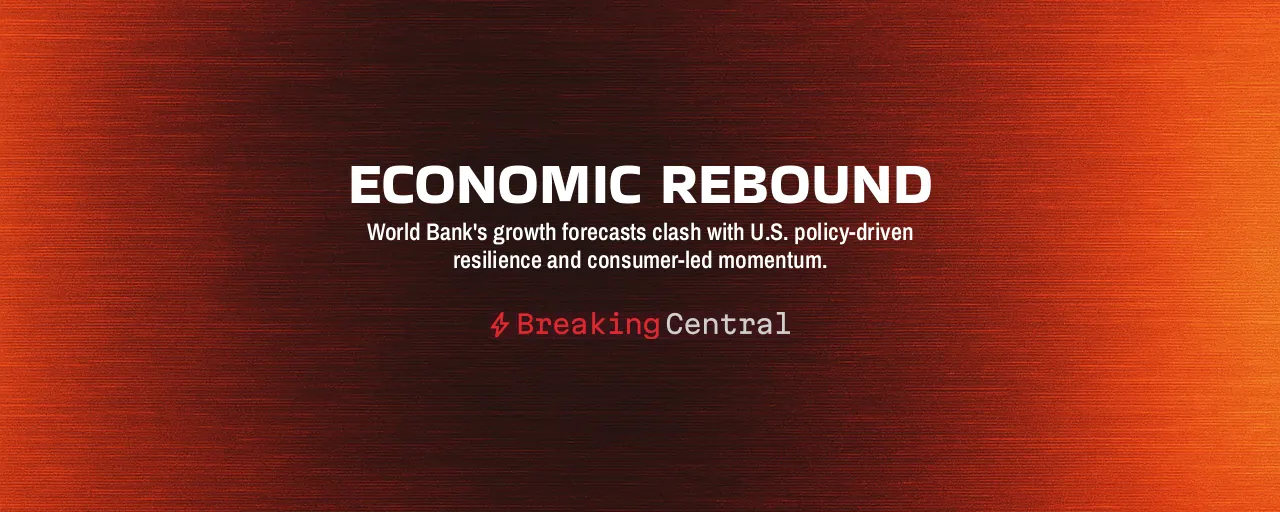A Prediction That Falls Short
The World Bank's recent forecast, pegging U.S. economic growth at a paltry 1.4% for 2025, feels like a misstep. This projection undervalues America's capacity to prosper, going beyond mere numerical analysis. Trade tensions and global challenges exist, yet the bank's somber view overlooks the policies and consumer vigor fueling our economy.
Why does this forecast matter? It shapes how businesses plan, how markets react, and how families feel about their future. A pessimistic outlook risks sapping confidence when evidence points to robust growth. The World Bank's focus on trade barriers misses the broader story of American resilience.
President Trump's policies, emphasizing corporate tax relief, deregulation, and energy independence, are paving the way for expansion. Analysts at Goldman Sachs project 2.5% GDP growth for 2025, while Morgan Stanley predicts the S&P 500 will hit 6,500 by mid-2026. These projections reflect genuine market enthusiasm.
The World Bank, however, zeros in on tariffs as the economy's main obstacle, warning they could slash growth from 2024's 2.8%. This perspective exaggerates global slowdowns and discounts America's domestic momentum. Let's explore why this forecast doesn't capture the full picture.
Consumer spending, which drives nearly 70% of the economy, remains a powerhouse. J.P. Morgan reports a 3.0% year-over-year consumption surge for Q2 2025, led by younger generations. Why doubt a nation where spending thrives?
Policies That Unleash Prosperity
Decades of conservative economic wisdom, from Reagan's tax cuts to today's deregulation, show that freeing businesses to innovate sparks growth. Current policies build on this foundation. Corporate tax relief has boosted capital, with intellectual property investment now accounting for two-thirds of nonresidential fixed growth.
The World Bank's emphasis on tariff risks tells only half the story. Trade barriers shield American industries and jobs, leveling the playing field against foreign rivals. The 1980s demonstrated that protectionism can coexist with strong growth, a fact the bank's call to reverse tariffs ignores.
The Federal Reserve's decision to hold rates at 4.25 to 4.50% reflects a cautious approach, not paralysis. Economists anticipate rate cuts after September 2025, spurring further investment and spending. This measured approach prevents the inflation spikes of the 1970s, keeping the economy on track.
Some economists, aligned with Democratic priorities, advocate for sweeping public spending to counter tariff costs, predicting growth below 1.5% without it. Yet, history shows that heavy deficits and government overreach, like post-2009 recoveries, slow private-sector dynamism. Their view aligns with the World Bank's caution, yet it overlooks market vitality.
Businesses are investing in technology and innovation despite global uncertainties, rather than retreating. The World Bank's 1.4% forecast underestimates this drive. Why rely on a model that overlooks such clear momentum?
Standing Strong Against Global Challenges
A global slowdown, with the World Bank projecting 2.3% global GDP growth for 2025, poses hurdles. Europe stagnates, and China slows, but America's economy, powered by consumer spending, operates differently. It has navigated tougher storms, from the 2008 crisis to COVID disruptions.
Tariffs may reduce exports, yet they encourage domestic production. U.S. firms have adapted, reshoring operations and diversifying supply chains, countering the bank's fears of disruption. This adaptability supports forecasts like Goldman Sachs' 2.5% growth estimate.
Inflation, at 2.3% in April 2025, is under control, though core inflation's 2.8% stickiness signals tariff pressures. Strong labor markets and wage growth sustain consumer confidence. The Fed's delayed rate cuts balance growth with price stability, unlike the painful Volcker-era measures.
America's Path to Defying the Odds
The World Bank's 1.4% forecast presents a challenge we can overcome, not a final verdict. America's economy thrives on policies that empower businesses and consumers, not on timid global projections. Tax cuts, deregulation, and strategic trade measures set the stage for 2.0 to 3.0% growth, as conservative analysts foresee.
Advocates for massive government spending or abandoning tariffs misjudge what drives prosperity. Economic strength stems from vibrant markets, not bloated deficits or reliance on foreign goods. The 1980s and 1990s validated this; today's trends confirm it.
Looking to 2025, let's rally behind what works: a dynamic consumer base, innovative businesses, and policies prioritizing American success. The World Bank may predict gloom, but the U.S. economy is ready to soar.
